How to pressure wash your car or truck without damage (to you or your vehicle)
If washing your car or truck is one of your least favorite weekend activities, we have good news for you! You can cut your wash time in half with a pressure washer and get on with enjoying your weekend.
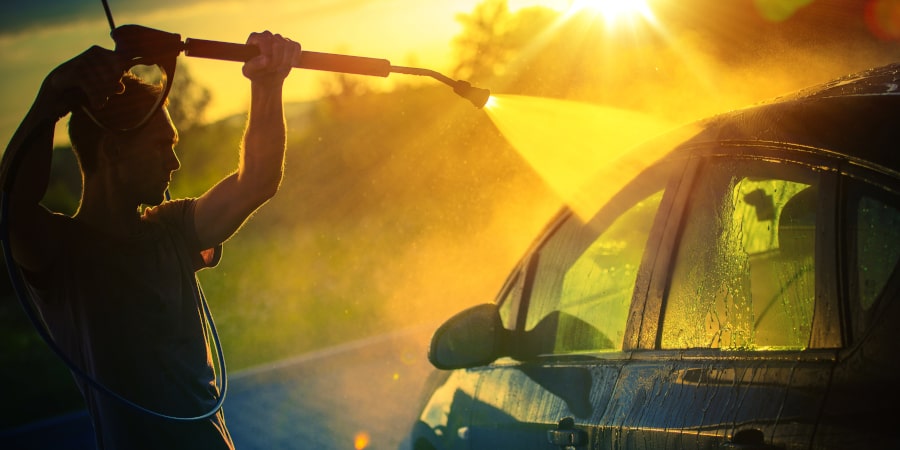
Pressure washers are much more efficient than your garden hose alone. By comparison, a pressure washer of around 1,500 PSI at 1.5 GPM is about 40% more efficient than a garden hose with 40 PSI at 7 GPM.

Why not just go through the drive-thru car wash, you ask? Sure, it’s quick, but it costs money, both in the gas to get there and the cost of a wash cycle. Also, automated car washes are not nearly as thorough as a hand wash, especially on wheels and undercarriages. And those brushes? If you knew how many rocks and other debris were on them, you’d think long and hard about taking your nice, scratch-free car through the automated wash.
Which type of pressure washer is best for cars?
A pressure washer can do a more thorough job of washing your car, quickly, with less water and less hassle. But you have to know how to use one on delicate surfaces such as car and truck paint. The best type of pressure washer for car washing and other light to medium-duty jobs is an electric pressure washer.
An electric washer with a PSI of 1200 – 1900 PSI with a GPM of 1.4 – 1.6 GPM is an ideal range. Though you can use a gas power washer, you’ll have to be extra careful with the spray since gas tends to be a lot more powerful than electric. It’s best to save the gas washer for your farm or lawn equipment.

Once you have the right pressure washer on hand, now you need to get all set up. First, you’ll need a spot close enough to an outdoor power outlet so you can plug in an electric washer. Many pressure washers cannot be used with extension cords, or you risk voiding the warranty.
Then make sure your car isn’t near other cars or delicate objects you don’t want to damage with the spray. A large driveway or street are prime locations.
Also, you may be used to wearing sandals or flip-flops for summer car washing, but when using a pressure washer, you should always wear closed-toe shoes. Grab the sneakers or work boots and get busy.
- Start with a rinse
It’s always best to start with a plain water rinse to remove any loose mud, salt, or bugs. For this, you’ll want a 25 (green) or 40 (white) degree nozzle. Do not go any lower than that. You’ll risk damage to the paint with a 0 or 15 degree nozzle.
- First, test the spray on the ground to make sure it’s not too strong.
- Holding the nozzle no closer than a foot from the car, spray the entire surface including the wheels. You can probably move a bit closer to the wheels since they’ll be extra grimy.
- Be careful around more delicate items like side view mirrors, headlights, brake lights, etc. You may need to move a little farther back for those.
Expert Tip: Spray at a downward angle rather than straight on to avoid any potential paint damage, especially if you’re new to pressure washing. - Soap it up
Make sure you have a detergent that is compatible with both the pressure washer and your car. Most pressure washers will have a detergent container. If yours doesn’t, you can simply apply it by hand with a wash mitt.
- Follow the owner’s manual to fill the detergent compartment on your pressure washer with cleaning solution. You may need to dilute it first by mixing it with water in a bucket.
- Attach the soap nozzle (black) to the end of the spray wand. Most washers will not be able to use the detergent unless you’re using the soap nozzle.
- Start spraying about 2 – 3 feet from the car. Gradually move closer as needed to remove tough bugs and mud.
- Apply detergent from the bottom up. This will help prevent streaks.
- Get closer to the wheels, up to 6 inches, to remove stubborn brake dust, road salt, etc.
- If necessary, use either a manual wash mitt or scrub brush, or a brush attachment for your pressure washer. These are great for getting bugs off the windshield or grill.
Expert tip: For cleaning tall vehicles such as full-size trucks, vans, or RVs, invest in a spray wand extension or an extendable wash mop for hard-to-reach areas. - Let the soap sit
Five minutes or so is probably all you need, but check the detergent instructions to be sure. Keep spraying the car intermittently so the soap doesn’t dry on the paint. If it’s a breezy or hot day, you’ll need to spray it more often.
- Time to rinse
- Disconnect the soap nozzle and replace with the 40-degree (white) nozzle.
- Point the wand to the ground and spray to flush the soap from the system.
- Now spray the car from the top down, keeping the wand about 3 – 4 feet from the surface.
- Dry time!
Car care experts recommend using a leather chamois to dry your vehicles. They absorb water amazingly well and are super gentle on paint. Plus they’re reusable and last for ages. If you’ve never used one before:
- Unroll the chamois and lay it flat on one area of the car.
- Slowly pull it toward you, keeping the full cloth in contact with the car.
- When it’s soaked up as much water as it can hold, wring it out.
- Repeat over every section until your car is dry.
- When finished, wring it out as well as you can and return it to its container to keep it from drying out.

Pressure Washer Tips & Tricks
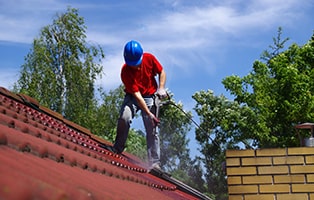
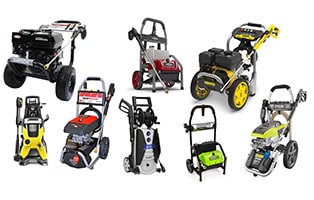
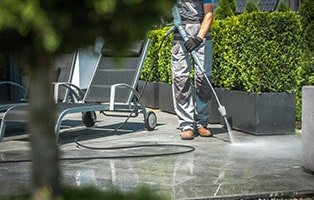
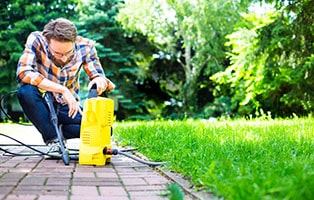
I’ll take note of the best pressure washer that I can use for my car and carefully apply it to avoid damage. Now I have an idea of what to choose, the product that will quickly do the job. Thank you for this article!
Hello Cleanup Expert!
I am amazed by the great insights about how to properly wash your car with a pressure washer. But I have a little problem, sir. How can one decide what nozzle to use? For example, I have a pressure washer with a 3200PSI pressure. How one pressure washer with 1800PSI of pressure can exert the same pressure as mine’s 25-degree nozzle? Kindly guide me. Thanks.
Fantastic article